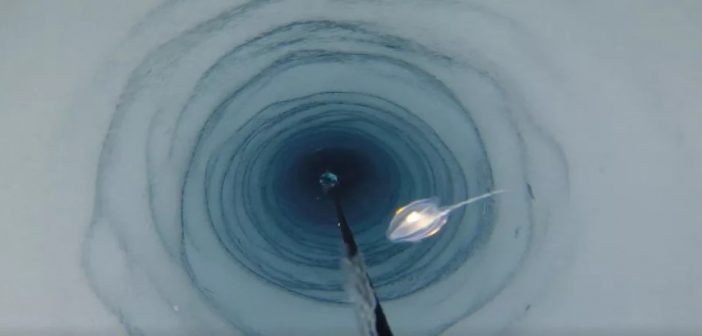Drilling through half-a-mile-thick ice and peering beneath Antarctica’s Filchner-Ronne Ice Shelf, researchers have accidentally stumbled upon strange creatures lurking on a rock beneath the icy continent.
Using a GoPro, a team of polar scientists with the British Antarctic Survey examined a boulder at a depth of over 4,000 feet and found it was alive with alien stalks.
The research, published in the journal Frontiers in Marine Science on recently, took place between 2015 and 2018 and is the first to document immobile animals — three “suspension feeders,” which the team identify as sponges and possibly other invertebrates. The discovery came as something of a surprise for scientists, who were drilling through the shelf that sits against the Weddell Sea.
“This discovery is one of those fortunate accidents that pushes ideas in a different direction and shows us that Antarctic marine life is incredibly special,” said Huw Griffiths, lead author and bio-geographer with the British Antarctic Survey, in a press release.
Finding life at depth isn’t unusual in the open ocean but 160 miles inland, under the ice shelf, previous research had never discovered any stationary life. Only mobile beasties were believed to occupy such a place underneath Antarctica because there’s believed to be a severe lack of nutrients in the abyssal dark. While the researchers found 22 individual animals, there’s still a lot to learn.
“Our discovery raises so many more questions than it answers, such as how did they get there? What are they eating? How long have they been there?” asks Griffiths.
The researchers make some guesses and suggest perhaps the creatures survive in the long term, by “island hopping” between stones in the deep, just as creatures in the open ocean are able to “hop” between hydrothermal vents and whale-falls. They could also be at risk from climate change and loss of the shelves.
Learning more about these creatures and their environment is slow. Scientists have only been able to acquire information by drilling through the shelves and, the team writes, the total area analyzed so far is comparable to a tennis court – about 200 square meters. The ice shelf habitats cover more than 1.5 million square kilometers.
“We are going to have to find new and innovative ways to study them and answer all the new questions we have,” said Griffiths.
(The story first published by CNET) ♦




